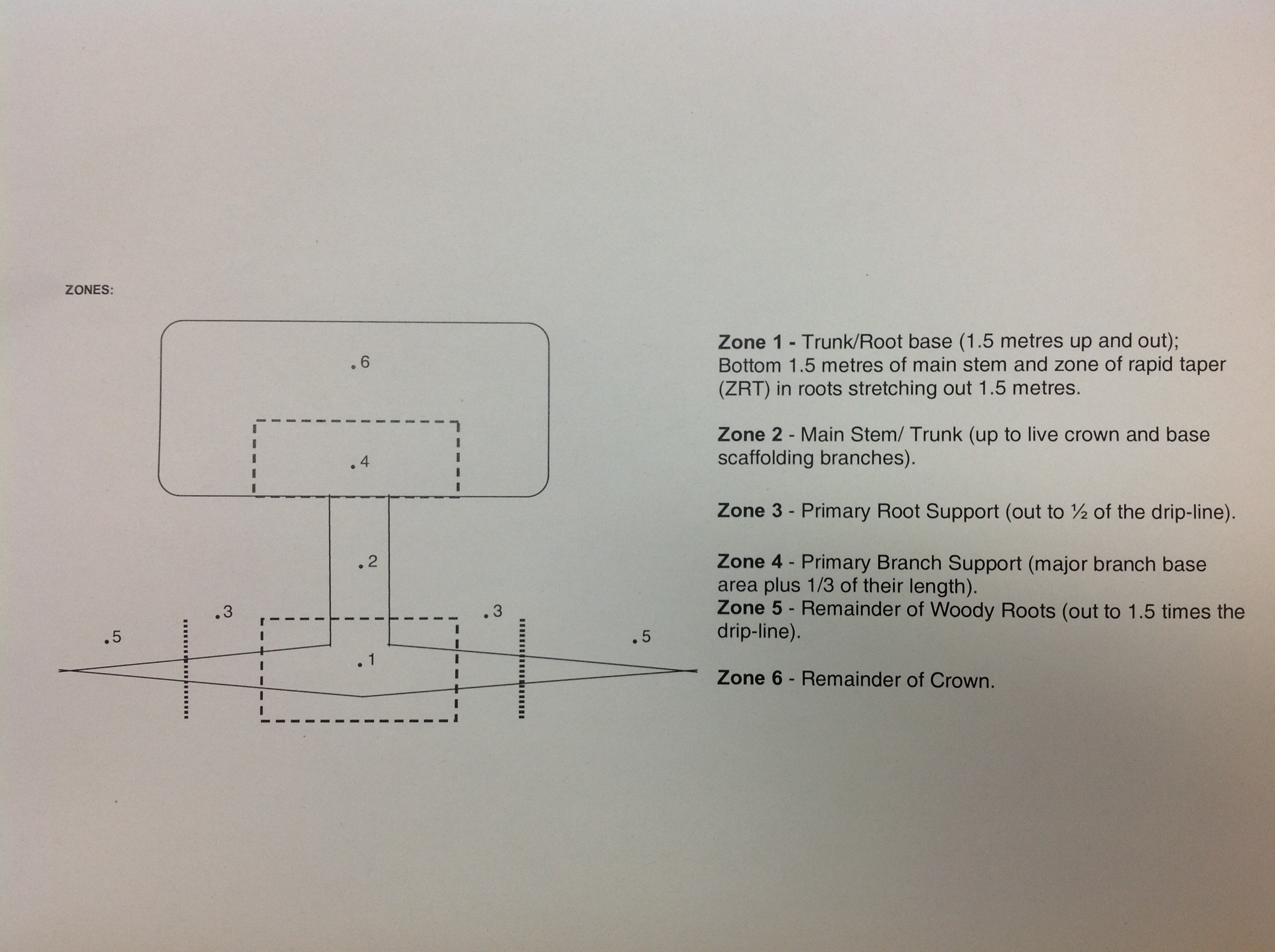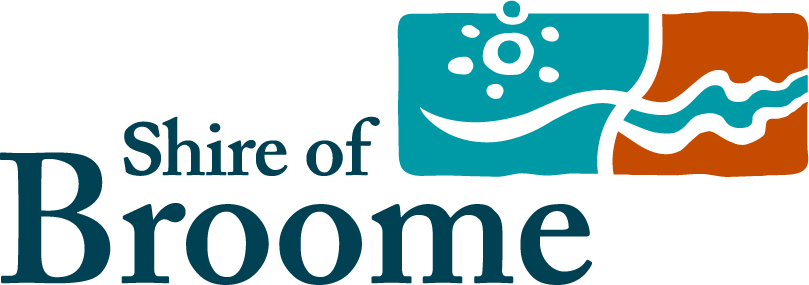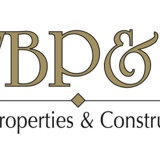Information
-
Document No.
-
VTA - VP #
-
Client / Site
-
Conducted on
-
Prepared by
-
Location
-
Job Brief
TREE CHARACTERISTICS
-
Photo of Tree
-
GIS Coordinates of tree
-
DBH (mm) - Diameter at Breast Height measured at 1.5 mtrs above ground
-
Age Class - see appendix 1 for detailed information
- New
- Juvenile
- Semi-mature
- Mature
- Over-mature
- Unknown
-
Tree Significance - see appendix 2 for detailed information
- Highly Significant
- Significant
- Desirable
- Non Desirable
-
Health - see appendix 3 for detailed information
- Excellent
- Good
- Fair
- Poor
- Hazardous
- Dead
- Unknown
-
Structure - see appendix 4 for detailed information
- Excellent
- Good
- Fair
- Poor
- Hazardous
- Dead
- Unknown
-
Tick if additional comments are required?
-
Comments
TREE VALUATION
-
Is a Tree Valuation Required?
-
Form / Vigour
- Perfect form & excellent vigour
- Sight imperfections in form
- Slightly reduced vigour
- Slight imperfections & slightly reduced vigour
- Good form and good vigour
- Good form and average vigour
- Good vigour with average form (0.7)
- Good form and poor vigour
- Good vigour and poor form
- Bifurication of trunk and excellent vigour
- Bifurication of trunk and good vigour
- Bifurication of trunk and average vigour
- Bifurication of trunk and poor vigour
- Poor form and average vigour
- Poor vigour and average form
- Poor form and poor vigour
- Poor form, cavities and excessive deadwood
- Dead
-
ULE - useful life expectancy
- 50 years
- 40 - 50 years
- 30 - 39 years
- 20 - 29 years
- 10 - 19 years
- less than 10 years
-
Location
- Perfectly suitable
- Not perfect /no problems
- Minor problems
- Unsuitable or problems
- Unsuitable and problems
- Unsuitable and major problems
- Completely unsuitable
-
Reference Species (from PDF reader)
-
Tick if additional comments are required?
-
Comments
RISK ASSESSMENT
-
Is a risk assessment required?
-
Tree Zone - see appendix 5 for detailed information
- Zone 1
- Zone 2
- Zone 3
- Zone 4
- Zone 5
- Zone 6
- None
-
Size of part likely to fail
- > 750 mm
- 451 - 750 mm
- 151 - 450 mm
- 20 - 150 mm
- < 20 mm
-
Usage / Target - see appendix 6 for detailed information
- Constant use
- Frequent use
- Intermittent use
- Occasional use
- Low use
-
Likelihood of Failure
- Certain
- Likely
- Possible
- Unlikely
- None
-
Consequence of Failure
- Catastrophic
- Major
- Moderate
- Minor
- Insignificant
-
Score Given
- 14 - 16
- 12 - 14
- 11 - 12
- 7 - 10
- 0 - 6
-
CRITICAL - P1 (REMEDIAL WORK REQUIRED SAME DAY)
-
Brief description of work raised
-
URGENT - P2 (REMEDIAL WORK REQUIRED WITHIN 2 - 14 DAYS)
-
Brief description of work raised
-
HIGH PRIORITY - P3 (REMEDIAL WORK REQUIRED WITHIN 15 - 90 DAYS)
-
Brief description of work raised
-
MEDIUM PRIORITY - P4 (REMEDIAL WORK REQUIRED WITHIN 12 MONTHS)
-
Brief description of work raised
-
LOW PRIORITY - P5 (NO WORK REQUIRED)
-
Tick if additional comments are required?
-
Comments
REMOVAL
-
Is Removal Required?
-
Is there high risk to person or property?
- Yes
- No
-
Is tree in irreversible decline?
- Yes
- No
-
Is there high risk to person?
- Yes
- No
-
Species inconsistent with BCC design?
- Yes
- No
-
Is there interference with signage?
- Yes
- No
-
Tick if additional comments are required?
-
Comments
VANDALISM
-
Has tree been vandalised?
-
Type of Vandalism
- Uprooted
- Removed
- Broken
- Leaning
- Damaged cage
- Damaged stakes
-
Tick if additional comments are required?
-
Comments
FAILURE
-
Has the tree failed?
-
Event name
-
Type of event
- Torrential rain
- High wind
- Minor storm
- Major storm
- Cyclone
- Other
-
Other
-
Cause of failure
- None obvious
- Dead section
- Decay
- Poor height / diameter
- Included bark
- Previously lopped
- Poor trunk / branch taper
- Tree root removal
- Root interference
- Mechanical
- Other
-
Other
-
Crown shape
- Spreading
- Upright
- Lopsided
- Supressed
-
Crown Density
- Dense
- Normal
- Sparse
-
Wind direction indicated by buttressing
- None
- N
- NE
- E
- SE
- S
- SW
- W
- NW
-
Describe previous maintenance
- None obvious
- Canopy lift
- Canopy thin
- Valley prune
- General prune
- Other
-
Soil characteristics
- Compacted
- Saturated
- Shallow
- Dry
- Good Condition
- Constrained space
- Other
-
Other
-
Percentage of tree failed
- 10
- 20
- 30
- 40
- 50
- 60
- 70
- 80
- 90
- 100
-
Primary zone of failure - see appendix 5 for detailed information
- Zone 1
- Zone 2
- Zone 3
- Zone 4
- Zone 5
- Zone 6
- None
-
Secondary zone of failure - see appendix 5 for detailed information
- Zone 1
- Zone 2
- Zone 3
- Zone 4
- Zone 5
- Zone 6
- None
-
Tertiary zone of failure - see appendix 5 for detailed information
- Zone 1
- Zone 2
- Zone 3
- Zone 4
- Zone 5
- Zone 6
- None
-
Diameter at breaking point
-
Consequence of failure
- Property damage
- Personal injury
- Road closure
- Service disruption
- Other
-
Other
-
Estimated damage / clean up $$
-
Tick if additional comments are required?
-
Comments
-
Habitat
- Yes
- No
-
Type of
-
Recommended re-inspection?
- Yes
- No
-
When?
- 3 months
- 6 months
- 9 months
- 12 months
- 18 months
- 24 months
- 36 months
- 48 months
- 60 months
APPENDIX
-
1. AGE
NEW : trees planted up to 12 months ago - newly planted trees
JUVENILE : trees planted 13 months to 5 years ago
SEMI MATURE : trees planted 6 to 20 years ago
MATURE : trees planted 21 to 50 years ago
OVER MATURE : trees planted more than 60 years ago -
2. TREE SIGNIFICANCE
HIGHLY SIGNIFICANT - rare/endangered species, VPO, historical, high aesthetic value, high cultural value.
SIGNIFICANT - healthy and sound tree that plays a significant role to the local community and contributes to the landscape.
DESIRABLE - well represented in the local area
UNDESIRABLE - common weed species -
3. HEALTH
EXCELLENT - crown full and balanced. Foliage entire with good colour, minimal or no pathogen damage.
GOOD - crown full, can be unbalanced. Foliage entire with good colour, minimal or no pathogen damage.
FAIR - tree has less than 30% deadwood. Canopy can be unbalanced. Foliage generally has good colour, minor pathogen damage present.
POOR - tree has more than 30% deadwood. Discoloured or distorted leaves and/or stress symptoms that could lead to the decline of the tree
HAZARDOUS - tree is dead. Tree is in severe decline with more than 70% deadwood. -
4. STRUCTURE
EXCELLENT - excellent branch attachment, no structural defects, trunk sound, no damage to roots and good root buttress, good trunk and scaffold branch taper.
GOOD - good branch attachment and/or minor structure defects. Trunk sound or minor damages. No damage to root and/or buttress present.
FAIR - some minor structural defects and/or minor damage to trunk. Bark missing. Cavities could be present. Minor damage to roots.
POOR - major structural defects and/or trunk damage, and or damaged roots.
HAZARDOUS - tree poses immediate hazard potential that could be rectified as soon as possible. -
5. TREE ZONES
-
6. USAGE/TARGET
Usage/target is the estimation of the occupancy and target potential within the fall zone of the subject tree.
CONSTANT USE:
a) Permanent structures, playground, car parks, pathways, formal lawn areas that are
occupied daily and are being used 80%-100% of the time.
b) Freeways and major road corridors - Bus/Ferry/Rail terminals, traffic, pedestrian and
road signals and signage, medical and emergency facilities.
FREQUENT USE:
a) Permanent structures, playground, car parks, path ways, formal lawn areas that are
occupied for a couple of hours of a day.
b) interconnecting road corridors and congested intersections - Bus/Ferry/Rail terminals,
traffic, pedestrian and road signals and signage, schools and shopping centres and/or car parking adjacent
to frequent-use public areas.
INTERMITTENT USE:
a) Permanent structures, playground, car parks, path ways, formal lawn areas that are
occupied for a couple of hours a week.
b) Residential road corridors and congested intersections - Bus/Ferry/Rail terminals,
traffic, pedestrian and road signals and signage, and/or car parking adjacent to intermittent - use public
areas.
OCCASIONAL USE:
Peripheral areas with with occasion use or access with dispersed recreation. Permanent
structures, playgrounds, car parks and bush pathways, that are occupied a couple of times a month.
LOW USE:
Peripheral areas with low occupancy. No permanent structures and/or definitive bush pathways,
visited a couple of times a year.
-
7. LIKELIHOOD OF FAILURE
FAILURE CERTAIN: The tree has significant structural damage, unsupported active split trunk(s), unsupported
fractured/hanging branches, and dead branches/trunks and therefore failure is very likely to occur in most
circumstances.
FAILURE LIKELY: The tree indicates signs of excessive lateral branch weight, decay threshold has been
compromised, root damage, supporting heavily embedded included bark, supporting fractured branches,
major declining branches/trunks and therefore failure is likely to occur in most circumstances.
FAILURE POSSIBLE: Mature to aged tree in declining condition, structure concerns, decay apparent, history of
branch shedding, and therefore failure may occur at some time.
FAILURE UNLIKELY: Tree appears healthy, but has a potential to develop minor deadwood and therefore failure
is unlikely to occur at some time.
NO DETECTABLE THREATS: Tree appears healthy, no apparent signs of disease or damage, or is not of a size or
condition to pose













